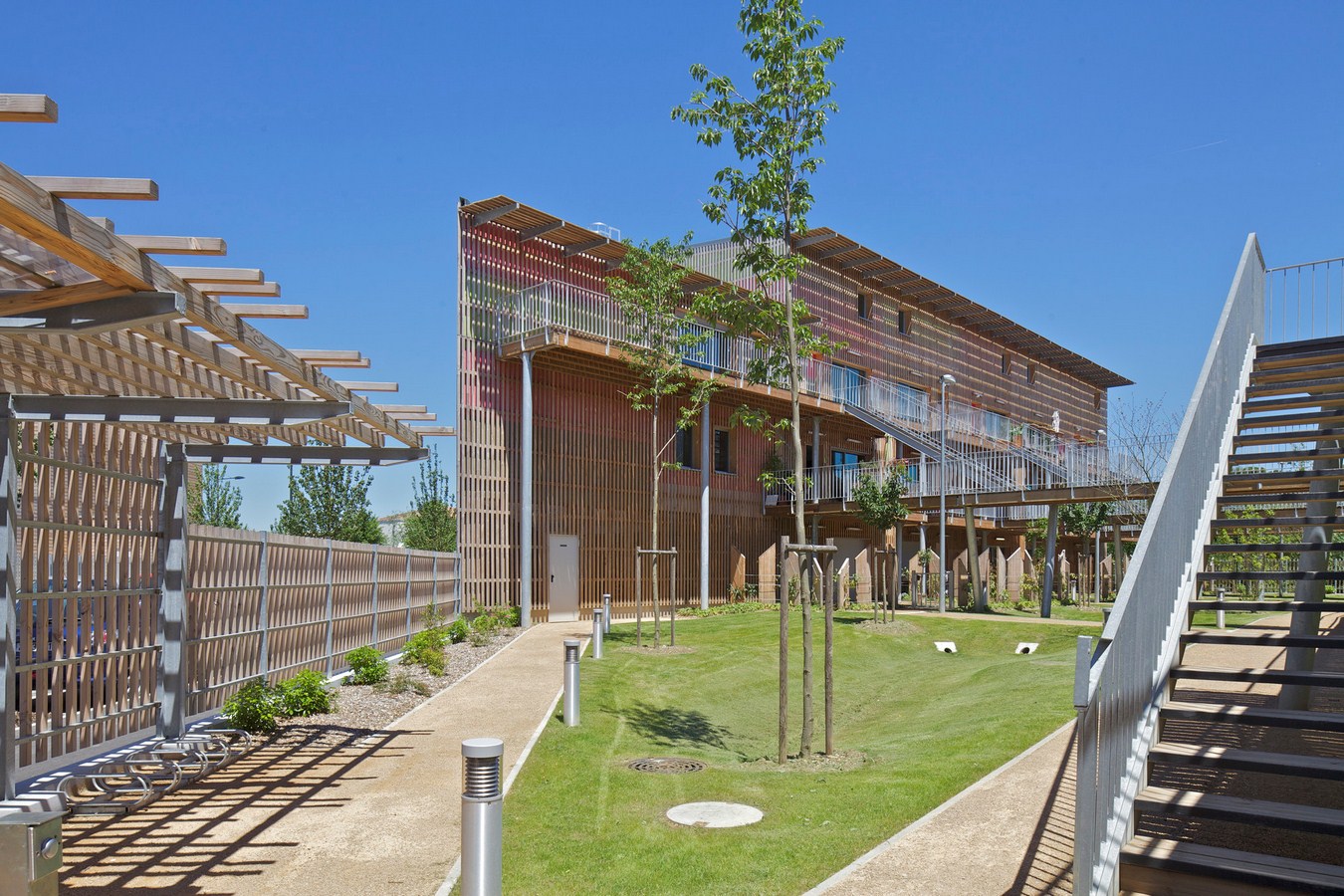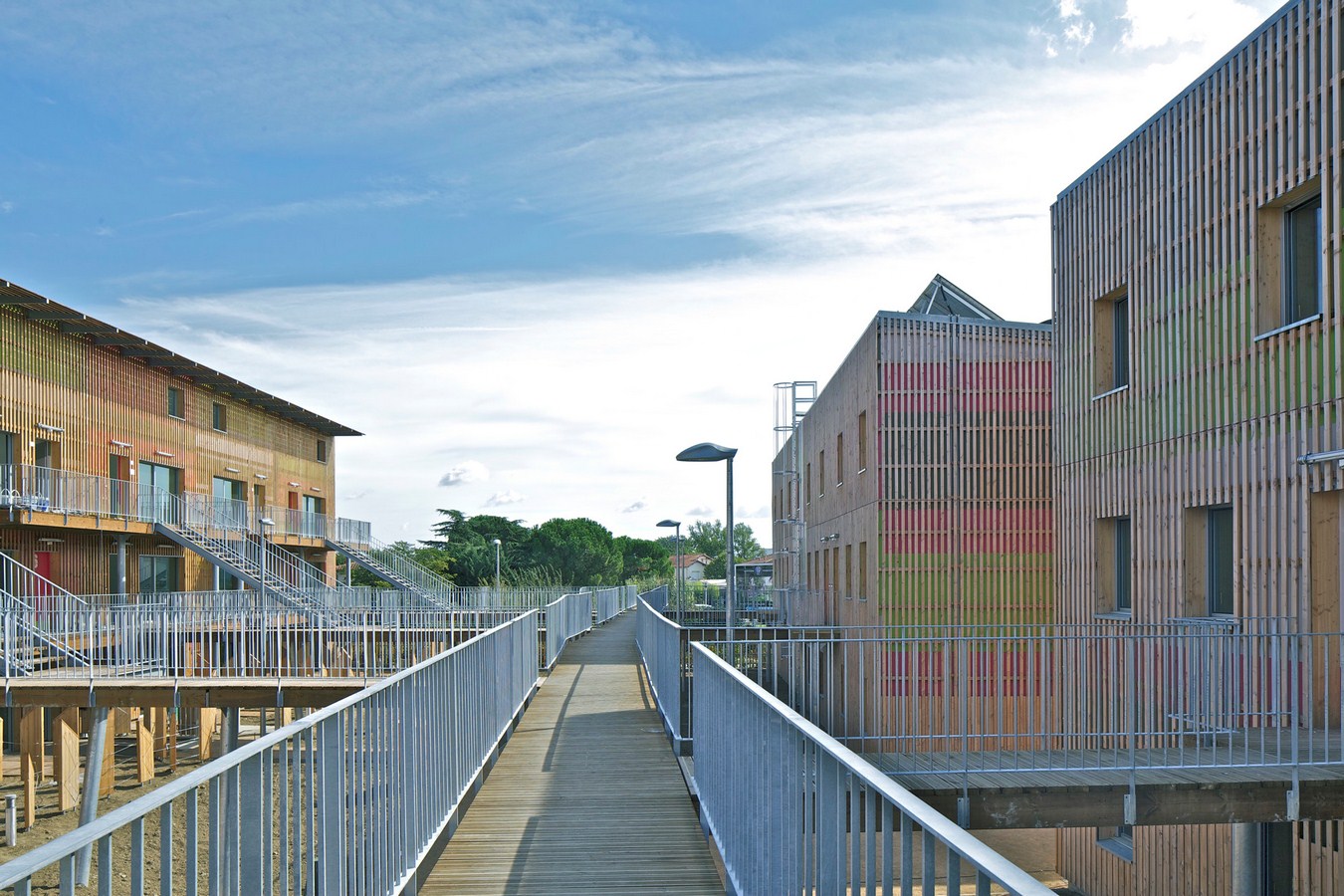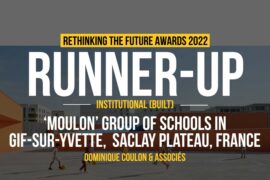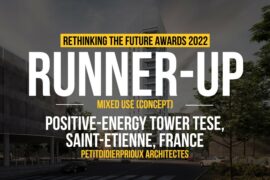Project Info
Architects: TRANSFORM + 109 architect(e)s
Location: Borderouge, Toulouse, France
Area: 3,200 sqm
Year: 2012
Photographs: Philippe Ruault
Client: OPPIDEA
Main Contractor: SATOB CONSTRUCTION BOIS
Consultants: SECA (thermal studies), SATOB (structure)
Quantity Surveyor : ALAYRAC
Landscape: agence POLES
Rendering Picture: Scalène

Introduction
The main goal of this project is to bring to collective housing some qualities of the individual dwelling. The buildings are designed as the juxtaposition of houses. The shared spaces are all external and far from the flats in order to preserve intimacy. The main footbridge allows people to cross a garden at 3m above ground level, between tree branches.

Details
Each of the 35 flats has double orientation with its living-room facing south and its bedrooms facing north. A large number of the housing units are duplexes, the double height of the living-room being more or less closed depending on the desires of the buyers. Each living room is extended outside by a private external space large enough to eat outside.

The car park is external, for cost reasons. The nearest parkings are hidden behind a fishnet on which some vegetation will grow. The project is linked to the subway station by a pedestrian path. At the entrance to the site, a large number of bicycle parking spaces are provided, for both residents and visitors.
The whole project, including its structure, is made of wood, using a platform frame system, which led to a shorter construction time. The fact that the whole structural frame was designed with the construction company has lowered the cost of construction, the production of good quality, affordable housing being one of the main targets of the client.
The global environmental design is based on simple concepts: the buildings are very compact, with a low ratio of façades. The south façades are very open, north façades very closed.

Efficient boxes instead of using sophisticated systems: the insulation is very effective and air insulating has been tested. Hot water is provided by solar panels on the roofs and large areas of photovoltaic panels were installed and sold to an external company in order to lower the cost of the buildings. The projet has received the BBC (Low energy consumption buildings) label.





